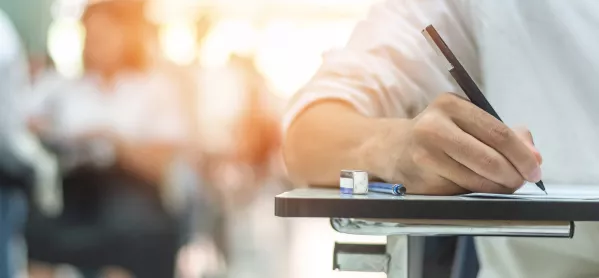Secondary schools have been told they should aim to keep students two metres apart from one another when they return in greater numbers from next month.
The guidance is contained in a new Department for Education document setting out how it expects schools to plan for Year 10 and 12 students to come back from 15 June.
The guidance says: “Schools should aim to practise social distancing in line with the measures the government is asking everyone to adopt in public and in workplaces, including keeping pupils 2 metres apart from each other where possible.”
Schools reopening: Years 10 and 12 will ‘predominantly’ be taught remotely
Read: Teacher safety debate needed, says Chris Whitty
Coronavirus: The science behind schools reopening
This differs from the rules for primary schools, which acknowledge that social distancing is harder to achieve for younger pupils.
Coronavirus: Reopening secondary schools safely
The latest guidance for secondary schools, published last night, states that social distancing is “more achievable in secondary schools than in primary schools, due to the age of the pupils, and is more important as mixing between groups - while limited as far as possible - will be more common in secondary schools”.
It adds that ensuring sufficient distance between secondary students is “likely to mean classes are no more than half their usual size”, but “this may vary due to individual school circumstances (for example a larger group could be taught in a larger space, provided social distancing can be maintained and mixing is minimised)”.
Mixing between different groups of students should be kept to a minimum, the guidance says.
The document states: “We recognise that the range of subjects taught in secondary schools means that some mixing may be unavoidable to provide pupils with face-to-face support from subject teachers. We would expect that these groups are still smaller than normal. We would also expect schools to minimise mixing for arrival, lunchtime, breaks and departure.”
However, passing in corridors is considered “low risk”.
Rotas may be used, unlike in primary schools.
Secondary schools should also, the guidance says, encourage students to walk or cycle where possible and “ensure that the use of public transport to travel to and from school is minimised as far as possible”. Staggered start and finish times should be introduced.
However, within this guidance, schools have the flexibility to implement face-to-face support for Year 10 and Year 12 pupils in the way that best suits their circumstances, including considerations around staff availability and workload.
Remote learning will be the “predominant” form of education for these year groups, the document says.
It says: “It is up to schools to decide how they want to use face-to-face support in the best interests of their pupils - eg, additional pastoral support, academic support, practical support or a combination of these.”




